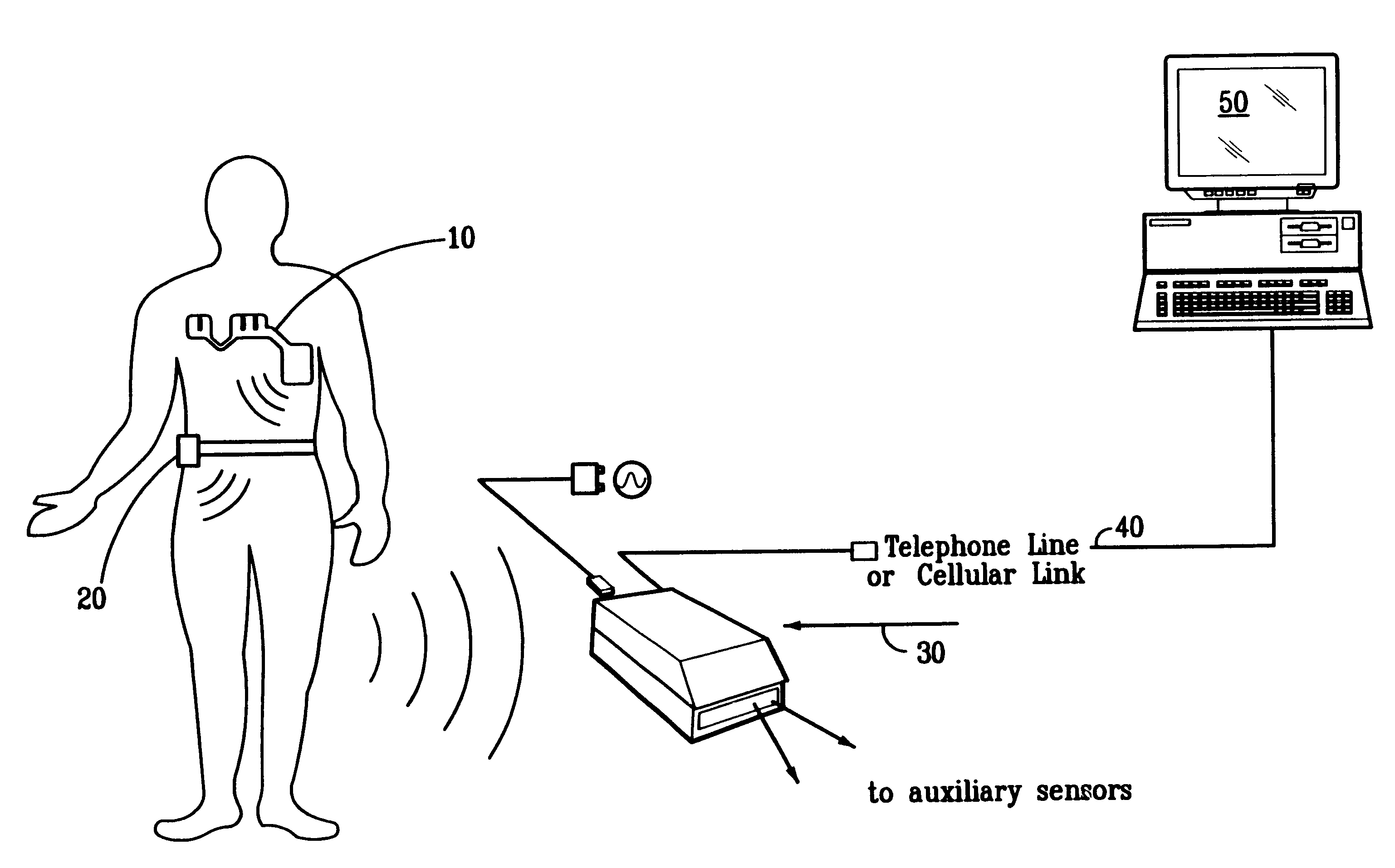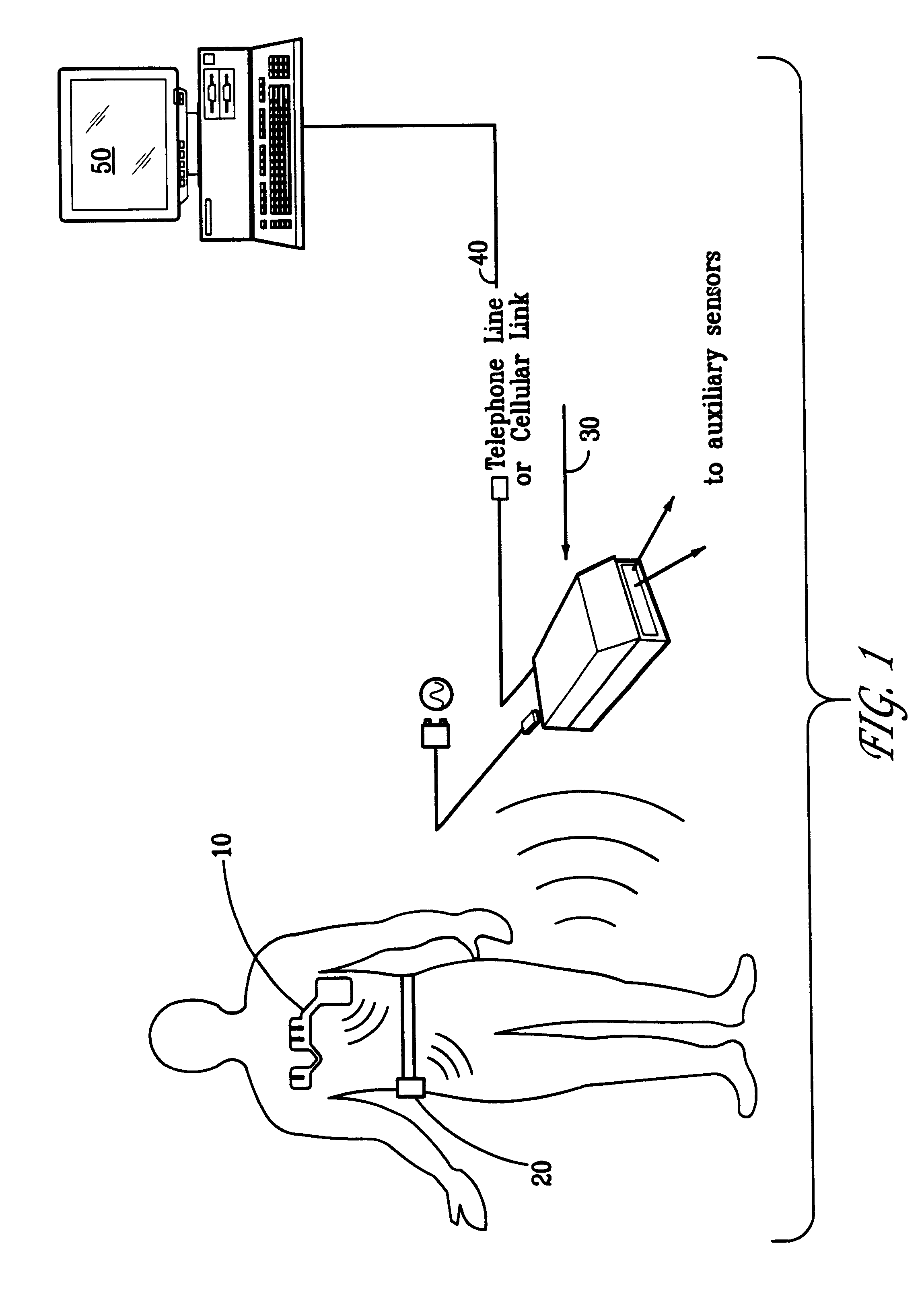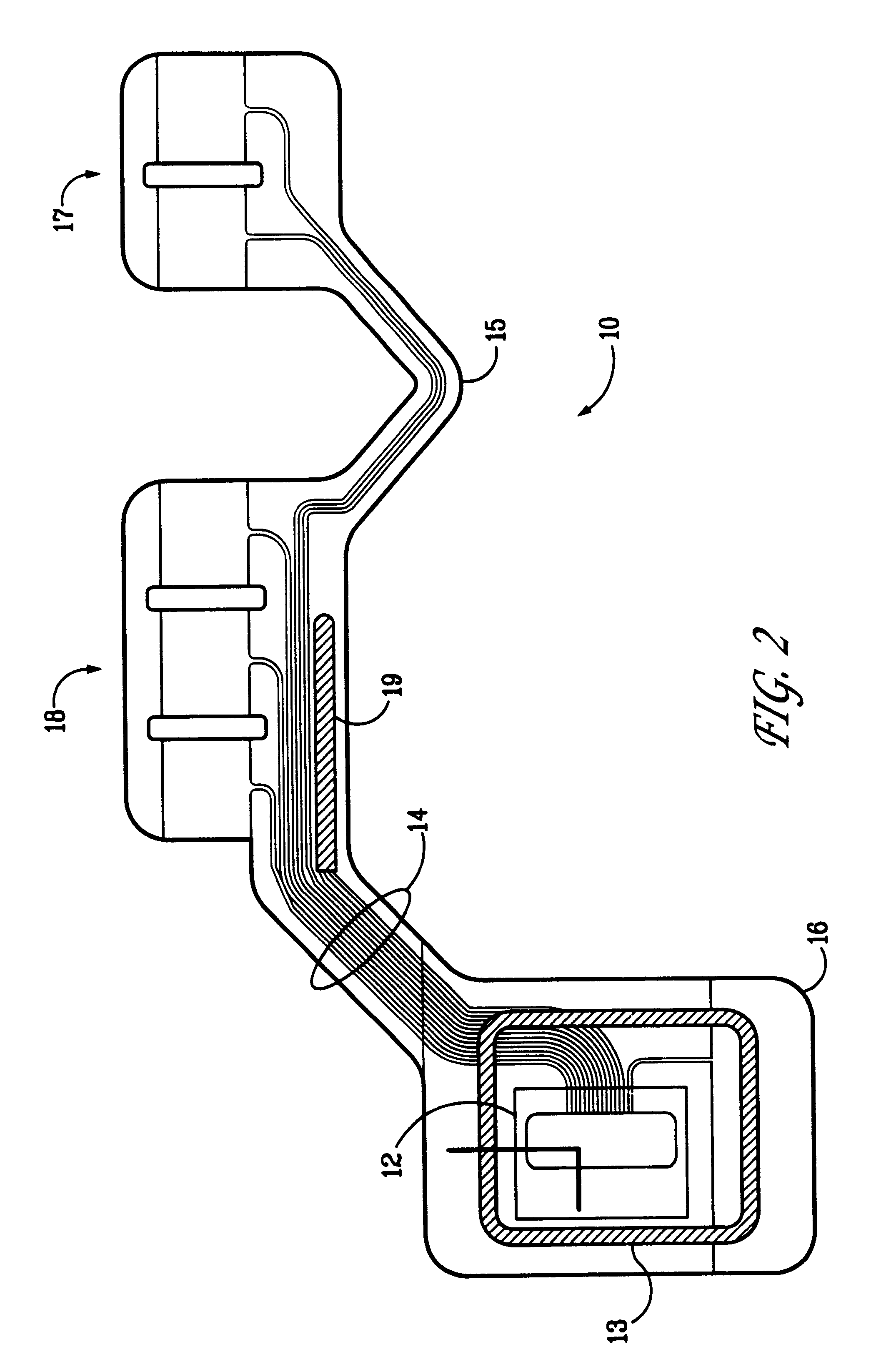Portable remote patient telemonitoring system
a remote patient and telemonitoring technology, applied in the field of monitoring vital signs and capturing data, can solve the problems of prolonging the duration of the trial, increasing the overall cost of the trial, and putting a lot of effort into human trials
- Summary
- Abstract
- Description
- Claims
- Application Information
AI Technical Summary
Problems solved by technology
Method used
Image
Examples
case 1
This case defines the ARQ behavior when a single erroneous packet is detected and no further errors occur on the communications link 75 thereafter. FIG. 10C defines the mechanism. As illustrated in FIG. 10C, the signal transfer unit 20 sends a data packet which is incorrectly received at the base station unit 30, the base station unit 30 sends a NAK package which contains a data field pointing to the first detected erroneous packet, and the signal transfer unit 20 retransmits the data packet. As illustrated in FIG. 10D, an identical procedure is adopted if the signal transfer unit 20 fails to receive a packet from the base station unit 30.
case 2
This case defines the ARQ behavior when two erroneous packets are detected consecutively and no further errors occur on the communications link 75 thereafter. FIG. 10E defines the mechanism. As illustrated in FIG. 10E, the signal transfer unit 20 sends a data packet which is incorrectly received at the base station unit 30, and the base station unit 30 sends a NAK packet which is incorrectly received by the signal transfer unit 20. The signal transfer unit 20 then transmits a NAK which is correctly received at the base station unit 30 which then retransmits the first NAK packet containing a data field pointing to the first detected erroneous packet which is subsequently retransmitted by the signal transfer unit 20. As illustrated in FIG. 10F, an identical procedure is adopted if the signal transfer unit 20 fails to receive a packet from the base station unit 30.
case 3
This case defines the ARQ behavior when three erroneous packets are detected consecutively. FIG. 10G shows the mechanism. As illustrated in FIG. 10G, the base station unit 30 receives two consecutive erroneous packets and hence recognizes that the radio link has failed. No further reply is sent to the signal transfer unit 20 which, by implication, will inform the signal transfer unit 20 that the link has failed. The base station unit 30 then returns to receive mode and awaits re-establishment of the communications link 75 by a dialog request from the signal transfer unit 20. Similarly, if the first erroneous packet is received by the signal transfer unit 20, an identical mechanism is adopted as shown in FIG. 10H. This case also defines the situation where a correctly received packet lies between two erroneous packets as the receiving unit detects two consecutive erroneous data packets and considers the radio link to have failed. FIG. 10 illustrates the dialog in this case.
Packet For...
PUM
 Login to View More
Login to View More Abstract
Description
Claims
Application Information
 Login to View More
Login to View More - R&D
- Intellectual Property
- Life Sciences
- Materials
- Tech Scout
- Unparalleled Data Quality
- Higher Quality Content
- 60% Fewer Hallucinations
Browse by: Latest US Patents, China's latest patents, Technical Efficacy Thesaurus, Application Domain, Technology Topic, Popular Technical Reports.
© 2025 PatSnap. All rights reserved.Legal|Privacy policy|Modern Slavery Act Transparency Statement|Sitemap|About US| Contact US: help@patsnap.com



